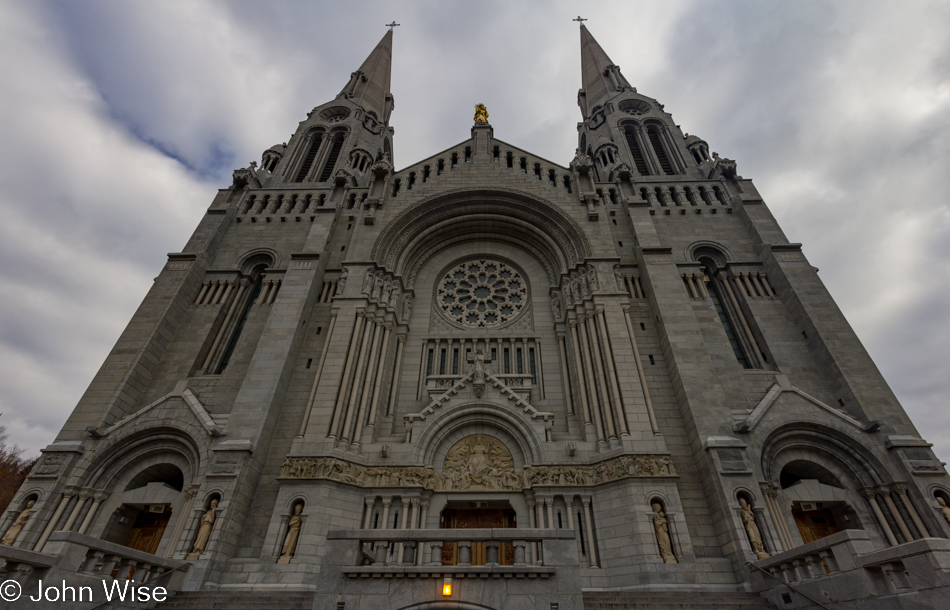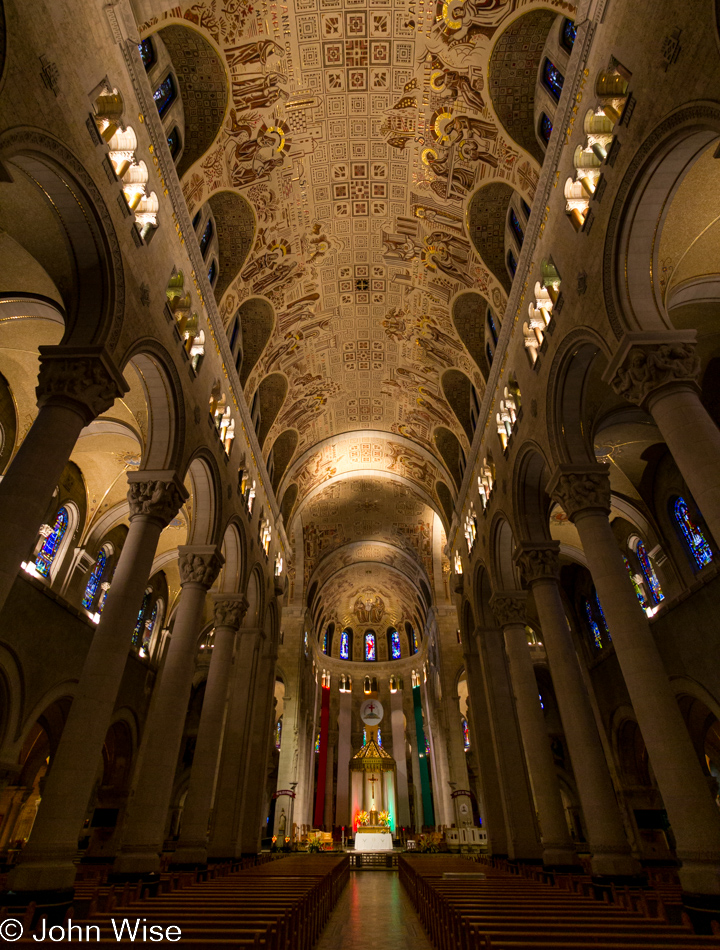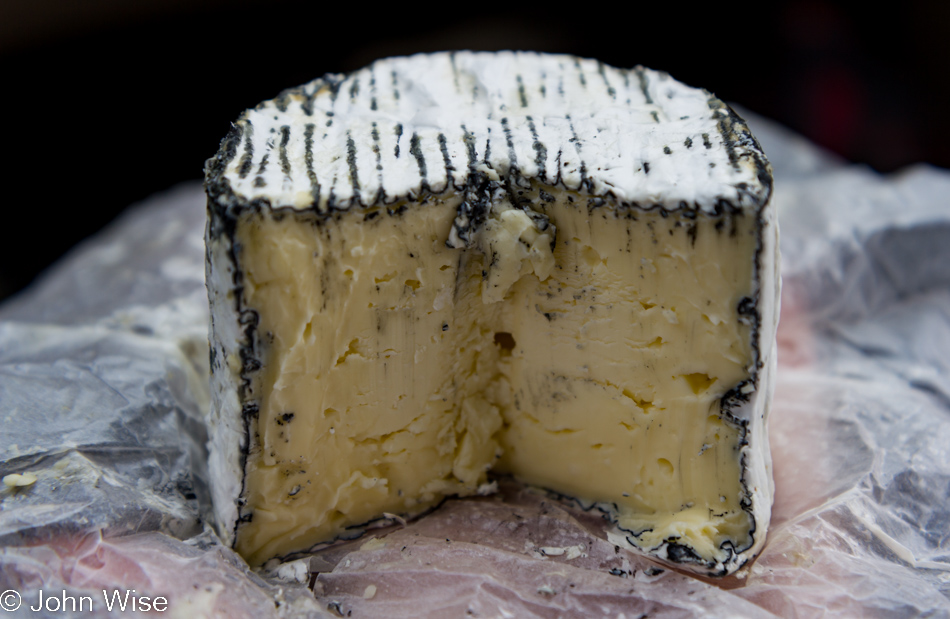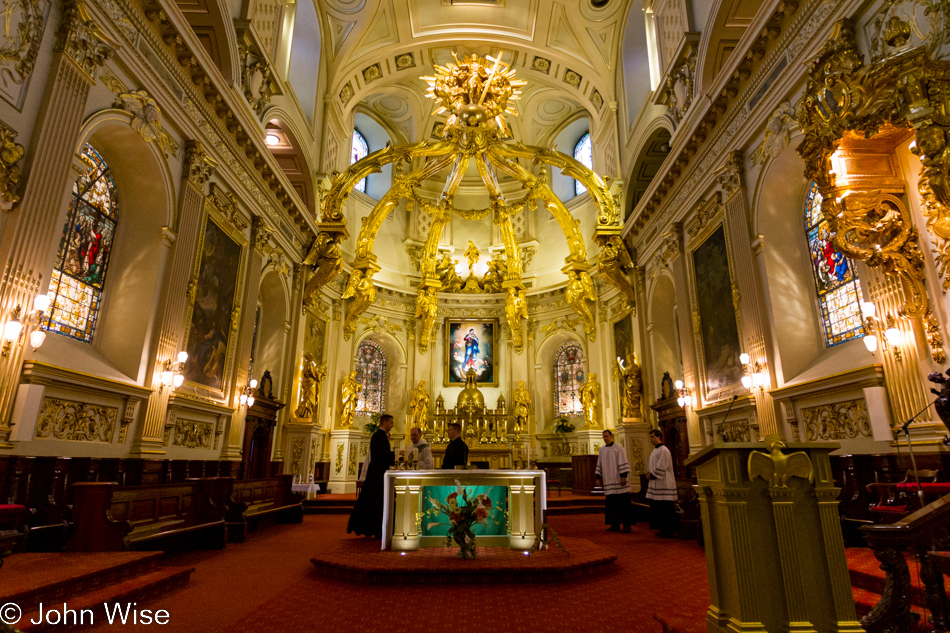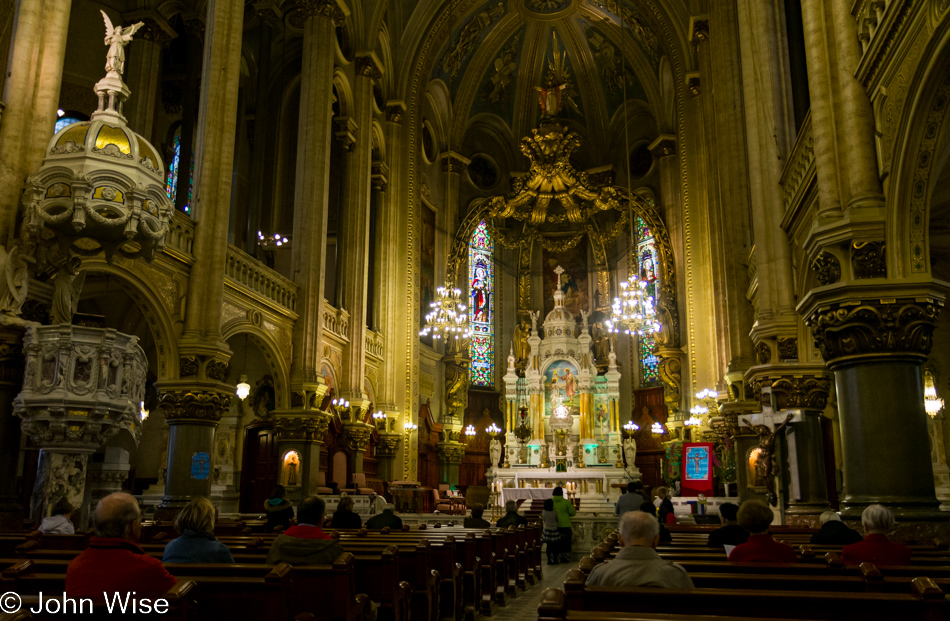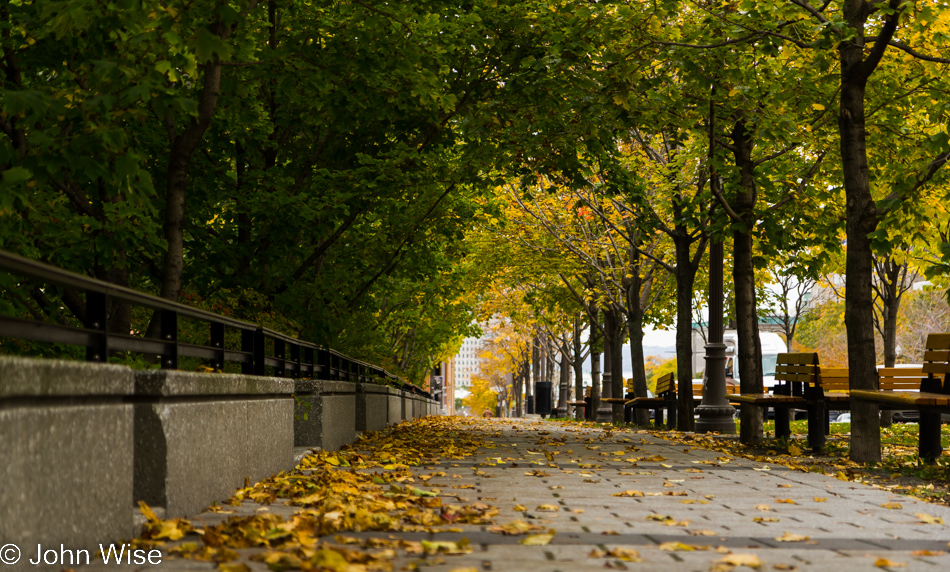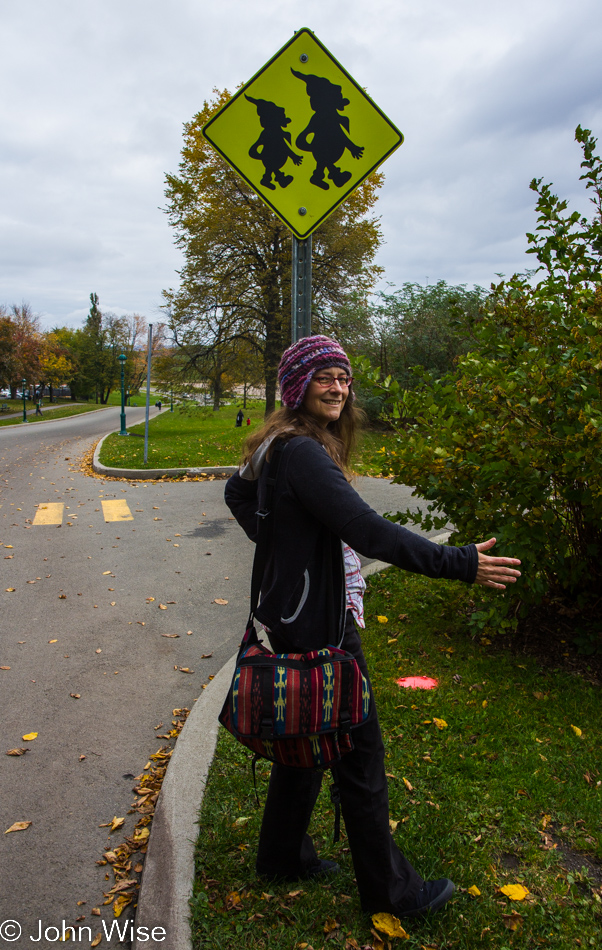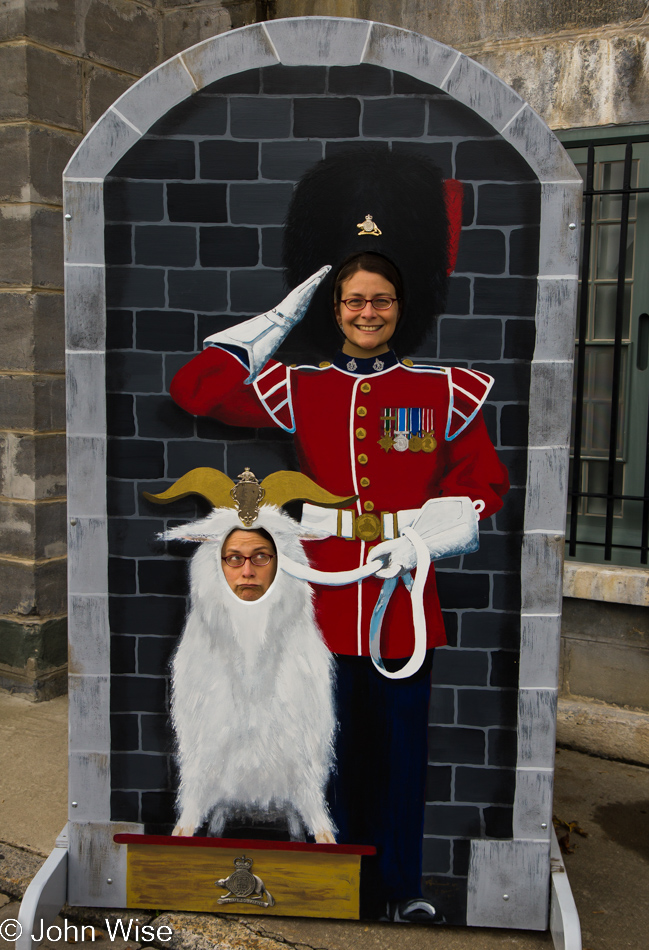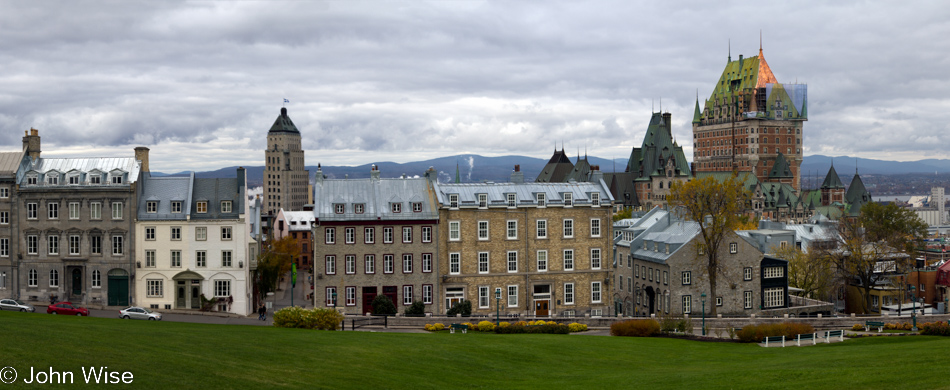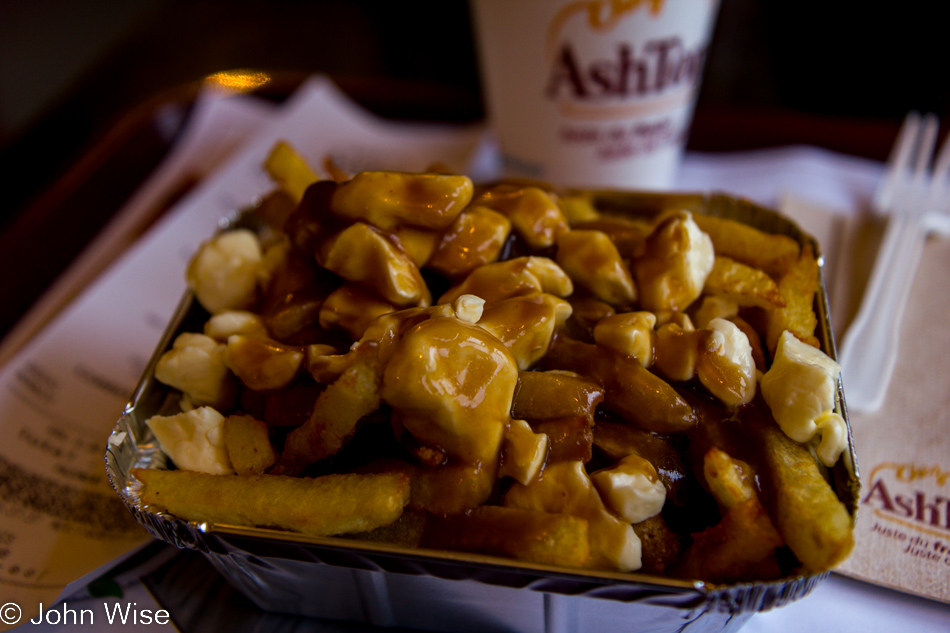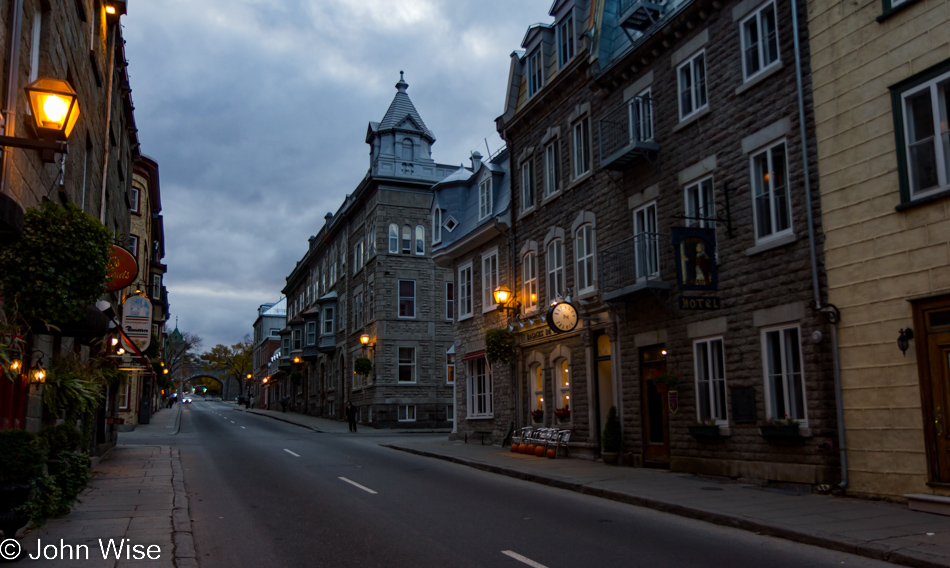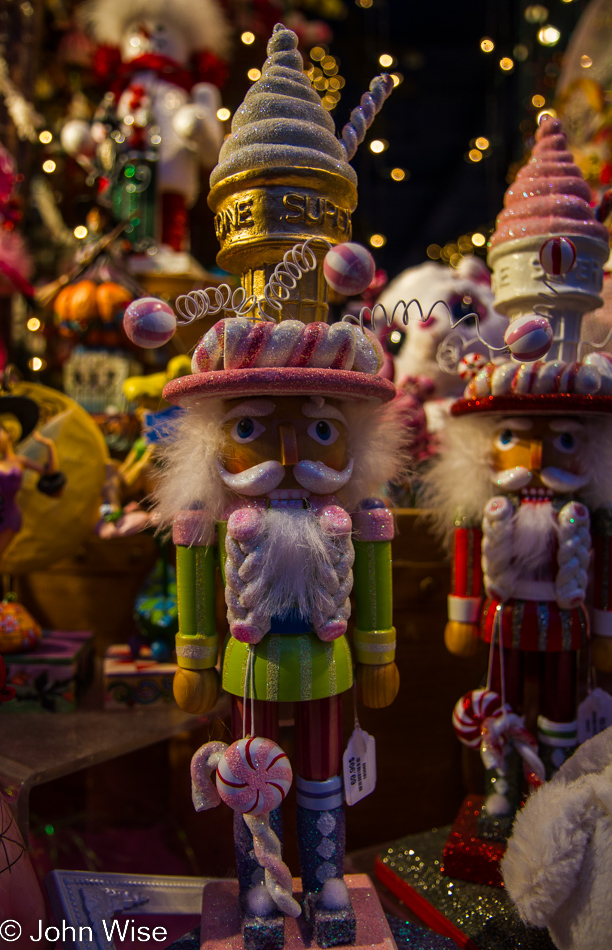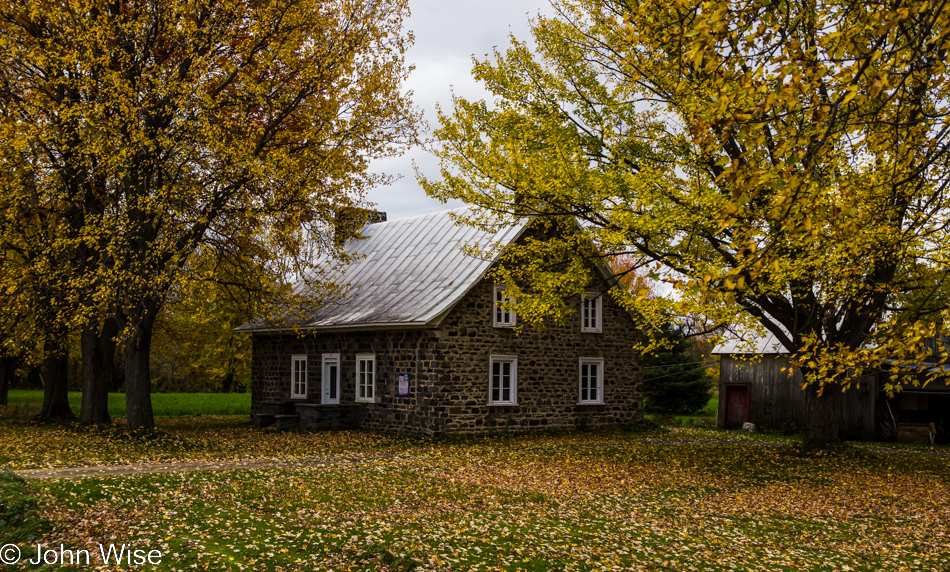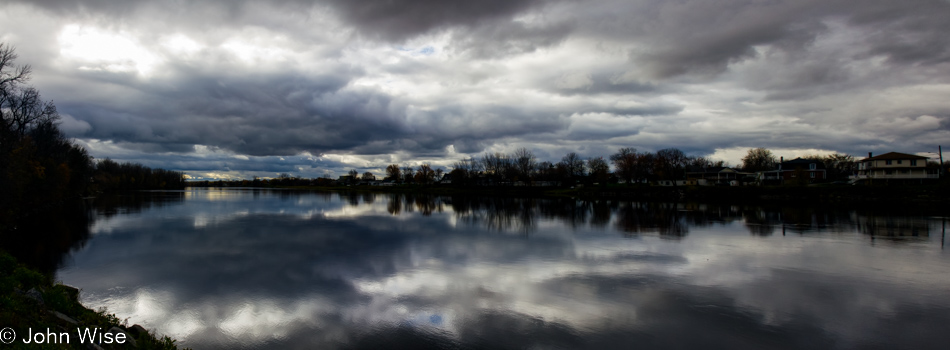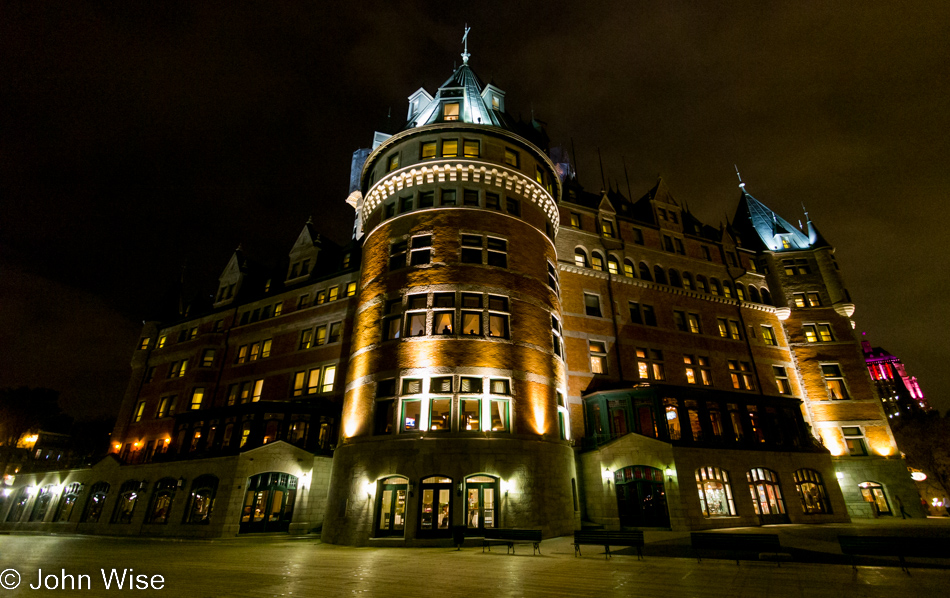
Sometimes, when we travel, the weather isn’t perfect, or so it seems at the moment. Overcast doesn’t make for vibrant travel photos, but it does focus the eye on details in closer proximity to our path. From under the gray cloud cover, it becomes difficult to grab an image of beauty that conveys to the viewer the delight had by the photographer. So, instead of trying to capture the elusive, it was in my best interest to focus on what I was going to get from this visit to Old Montreal. We started early with a walk on nearly empty streets from our hotel to the river’s edge, then on into the historic district.

Experience has taught us that to feel a moment of the heartbeat of a city, one should rise with the waking locals. Move within their routine. Take pause in their footsteps. See their domain across the timescape of the early morning through the late of night. Old Montreal has all the feel of many an old European city, save for these artistic reminders of the subarctic cultures that populate the northern climes of Canada.

All that’s missing right now is the fog in the late of night, the lamp flickering with the light of a gas flame, and the slow clip-clop sound of a horse pulling a carriage, as we walk along the dark alley. A tip of the hat and a bid for a safe evening is offered; we scurry along with music and laughter from a local bar heard in the distance. Mysteries hidden behind stone facades are better served on cobblestone streets. Our tour of the old town continues.

This is Notre Dame Basilica Montreal, and it is stunning. The Canadian French take their saints and religion seriously. Well, maybe they don’t anymore, but the history of their ancestor’s belief in the Almighty can be witnessed across the landscape and on most of the major streets. For example, the basilica is at 424 Rue Saint Sulpice. After our gawking visit, we will collect a coffee and board the subway at Rue Saint-Urbain – Saints everywhere.

If you want to feel like you are in a real city, not just some spread-everywhere metropolis-of-conformity (like, say, Phoenix), a subway lends an air of authenticity that you are in a place that deserves a rapid means of transport to the far corners of its community. The idea is that there are places here worth visiting spread across the map – not just another shopping center down the road. Our destination is another of those bastions of local culture – the farmer’s market.

We are at the Jean-Talon Market in the Little Italy district of Montreal. The lady who was selling the cranberries in the photo above, Caroline, also sold her own cranberry-apple juice. Local markets are not always tourist destinations, so do not expect much of your tongue to be spoken, and forget about signage that will help you navigate. Do not, though, discount your own intuition. The big metal beverage dispenser with French words likely offers something yummy, so I go for it. With my best pronunciation of the French word for one and a sharp pointing of my finger, I order “one of those.” The lady, recognizing my incredible mastery of her language, throws a string of French words in my direction, obviously asking me something I am going to easily understand (not); my only response is, oui – I could be relatively certain she wasn’t asking if I’d like a disease mixed into my drink. Good thing I’m Mr. International; not only are we surprised to find out that the cranberry juice is served hot, but the vendor’s question had been, “Would you like this with a dash of cinnamon?” Try it yourself; it’s as perfect as a spiced cider on a chilly fall day.

The fall harvest is on display in abundance. At this point, Montreal becomes a truly livable city to Caroline and me. This is also the time we start to recognize one of the peculiar differences between the United States and Canada – the cost of food. Breakfast at the truck stop yesterday was expensive, considering we all had your basic bacon and egg breakfast. Here at the market, we find prices for fresh food we haven’t seen in five years across the border. Four-pound cauliflower for $2, 2.5 pounds of creamer potatoes cost $3, a bushel of apples for $10, and a basket of four eggplant – only $3. One could get the impression that there is a subtle encouragement for people to avoid the convenience of fast food and invest their time in cooking at home – how weird is that?

But is Montreal perfect? We will have to verify this with a visit to a bakery and a cheesemonger. Being at a farmers market, and a French one at that, it should be obvious that a boulangerie and fromagerie would be nearby. I beg for an answer to the question, how did we Americans fall into Wonderbread and Kraft Slices? The bakery is big, busy, and full of a wide variety of crusty bread, treats, and baguettes. Around the corner, on narrow aisles, cheeses of every sort and beautiful stench are available for sampling. If it weren’t for all the incredible infinitely explorable landscape in the states, I do believe we would have to transplant ourselves to live amongst a people that appreciates a well-satisfied palate with a good dose of art, music, or theater to round out a day. No, New York City does not fit this bill, as the bills for living there require gargantuan salaries.

From cranberry juice to hops juice. It’s lunchtime, and Caroline opts for a beer. Before we get to the beer though, we first begin what should have been a long walk back towards our hotel. While we enjoy riding the underground subway we see little besides the stations, so we decide to walk and take in some more sightseeing. And we walk. By now, our feet are getting sore, heck, with all this walking. Plus, we had bought four train tickets, anticipating that we would ride the 4-mile return, sparing our feet. Time to hop on the metro. The slight discomfort isn’t the only thing pushing us to hurry.

We are returning to La Banquise for more poutine. I wanted to try some good French home cooking, but that wasn’t easy to find, while the warm comfort of gravy-laden fries with cheese beckoned like a lighthouse on the horizon. Yes, we feel guilty about taking the path of least resistance, of not being adventurous and dipping into the unknown – but we are talking about POUTINE! If you haven’t had it, you cannot know; you cannot judge the measure of our sloth and simultaneous delight. Now, excuse me while I indulge my senses in the memories of our mushroom, onion, green pepper, and cheese curd lunch.

Anyone who knows Caroline and me knows that we love nature. Continuing our compatibility test with Montreal, we head into the local wilds, Lafontaine Park. This 100-acre park is Mount Royal’s (bet you hadn’t considered Montreal’s translation) largest park; it will serve as our basis for observing nature and wildlife that might be found in the city. Squirrels, this was as good as it got. Lots of squirrels were scampering up trees and across the grass, but these were fierce squirrels showing little concern for the multitude of dogs who might be interested in a quick game of chase. This carelessness is probably not good for these well-fed, chunky specimens of squirreldom.

It’s time to start moving away from Montreal, feeling that we have a good taste of what the city has to offer. One stop remains for our Intro To Montreal Tour, L’Oratoire Saint-Joseph du Mont-Royal. Construction began back in 1904, but inside, one feels as though this is one of the most modern basilicas to be found. So modern and open-minded that the signs within the facility let visitors know it’s okay for their children to pick their noses.
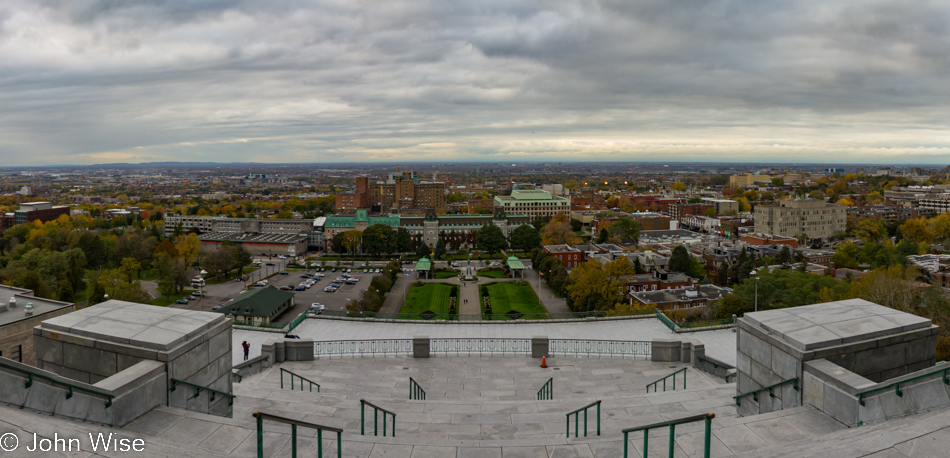
Making our way up the steep climb, we are offered a terrific panoramic view of the city. This is where a beautiful sunny day would have paid off for taking a spectacular photo.

As I said earlier if the overcast view doesn’t offer up a great photo opp, you better start looking for details. And what curious detail at St. Joseph’s was it that arrested our attention? Saint Andre Bessette’s heart. No longer pumping, but in apparently good shape after 74 years of resting outside his body. So we are religious noobs, but various body parts on display for worship strike the two of us as a bit weird. I’m certain that upon my death, there are rules against my wife keeping parts of me.

The greatest display of candles I’ve seen is here in Montreal at St. Joseph’s. Is this where the concept for Lite-Brite began? At first glance, I hadn’t noticed the pattern between red and clear glass candle holders. I can make out Joseph and Patron, but the rest must be in French. A small gate allows followers to climb the narrow steps on the left and right to ascend the heavens and light a candle. This would surely be illegal in America due to liability laws and the concern that someone might brush an article of clothing over the candles, immolating themselves before God and whatever children might be present. How long until this visual is used in a movie?

About to bring the day to a close, we drive out of Montreal and, once clear of the city, start looking for a room. Dinner tonight was on the road where we indulged on more of our stash of onion bread, cheese, and sausage – we bow down before Cathy for this little luxury. We find the small village of Lanoraie, 42 miles down the road; it offers up Motel Villa D’Autray. Our host doesn’t speak English beyond “Hello.” I offer back “Bon Soir.” Our French language mini-guidebook suggests I try “Combien s’il Vous plait,” she understands and shows me a rate card. We’re in business. I pay $65 for a great little room right across the street from the St. Lawrence Seaway. The flannel sheets were awesome, the bed comfy, and we were quick to sleep.

